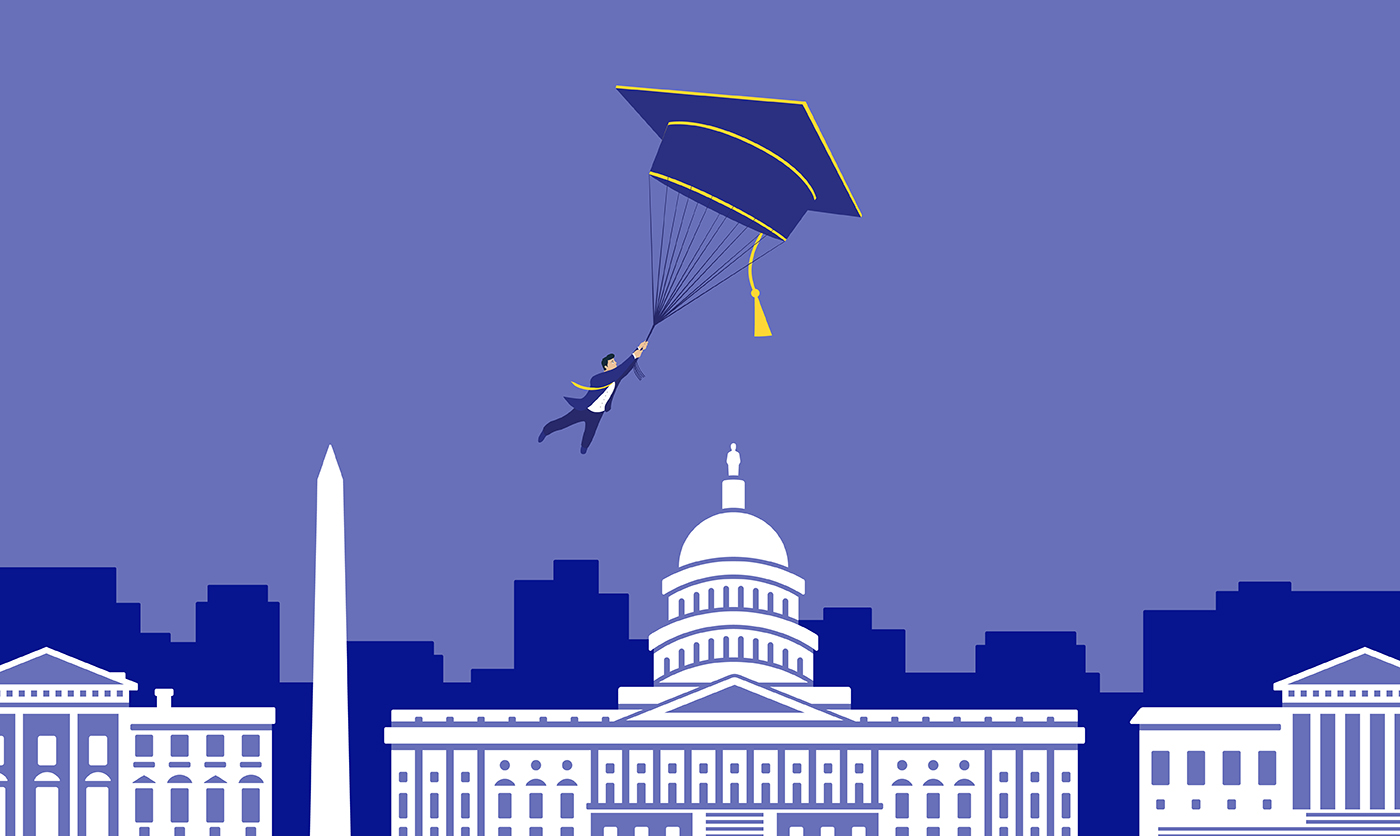Student Debt is not a primary driver of our rising national debt, however, the two issues are not completely disconnected.
Because 92% of student debt is issued by the federal government, as student debt climbs, so does its impact on the budget. Federal student loan debt in the United States has ballooned by 144% since the Great Recession, during which time default rates on student debt have remained high. In fact nearly one in five student loan borrowers default on their loans within the first three years of repayments, meaning a payment had not been made on their loan in at least 270 days.
How Do Federal Student Loans Affect The National Debt?
The government currently borrows more to fund new student loans than it receives in payments from existing loans due to a slowing of repayments — that net amount adds to the national debt. In order to make required payments on existing student debt the federal government borrows from the public, i.e. taxpayers.
The amount of student debt being repaid has slowed due various factors including a high share of borrowers defaulting on their loans and increased participation in income driven repayment (IDR) plans, which limit the borrower’s monthly payment to a portion of their income — regardless of the loan size. IDR plans tend to make student loans more affordable to many borrowers but generate a greater cost to the federal government.
The true cost of student loans to the federal government is a concern that has received wide attention in the wake of the COVID-19 pandemic and against the backdrop of a historically high level of student debt. Unrestrained growth in student debt complicates the nation’s already precarious fiscal position given that taxpayers are ultimately on the hook when repayments are reduced and forgiven.
To learn more about federal student loans and their impacts on borrowers and the federal budget, you’ll want to start here.
A resource from the Peter G. Peterson Foundation, created with collaboration from the Bipartisan Policy Center (BPC).
Click here to learn more about borrowing to help pay for college. Our Affordability Calculator can help guide you on the maximum amount that is recommended to borrow.
